Sigma A 50-100 mm f/1.8 DC HSM
3. Build quality
In fact the Sigma 50-100 mm is closer to full frame 70-200 mm f/2.8 models and the next chart. shows it pretty clearly; its focal range is narrower, that’s true, but it is faster and, at appropriate angles of view, it allows you to reach a greater depth of field. The dimensions of the tested lens are emphasized by the photo below where it is positioned next to another A series model - the full frame Sigma A 35 mm f/1.4 DG HSM.
Please Support UsIf you enjoy our reviews and articles, and you want us to continue our work please, support our website by donating through PayPal. The funds are going to be used for paying our editorial team, renting servers, and equipping our testing studio; only that way we will be able to continue providing you interesting content for free. |
- - - - - - - - - - - - - - - - - - - - - - - - - - - - - - - - - - - - - - - - - - - - - - - -
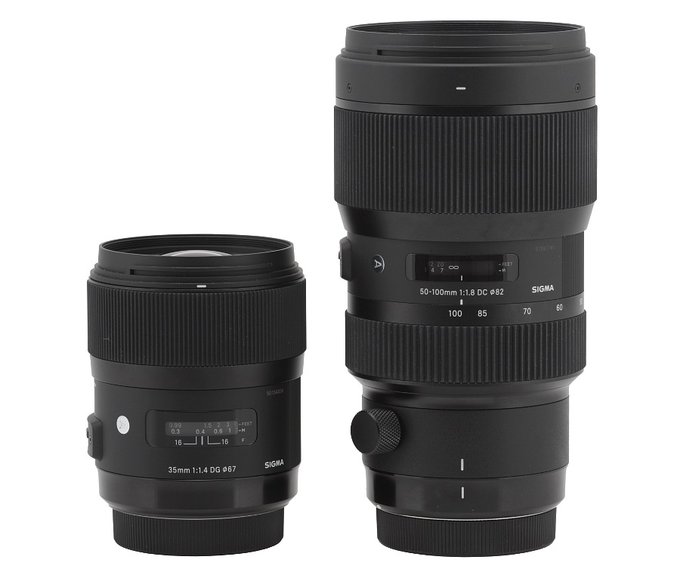 |
The Sigma A 50–100 mm f/1.8 begins with a metal mount surrounding a contact plate and a ribbed, well-matted tube. Inside the tube you find a rear element of the lens which is about 30 mm in diameter. It hides less than 2 cm inside the tube and it doesn’t change its position. It’s a pity, though, that the producer didn’t seal the construction properly from this side; there is a small slit between the edge of the lens and the inner tube through which you can glimpse greenish electronics plates.
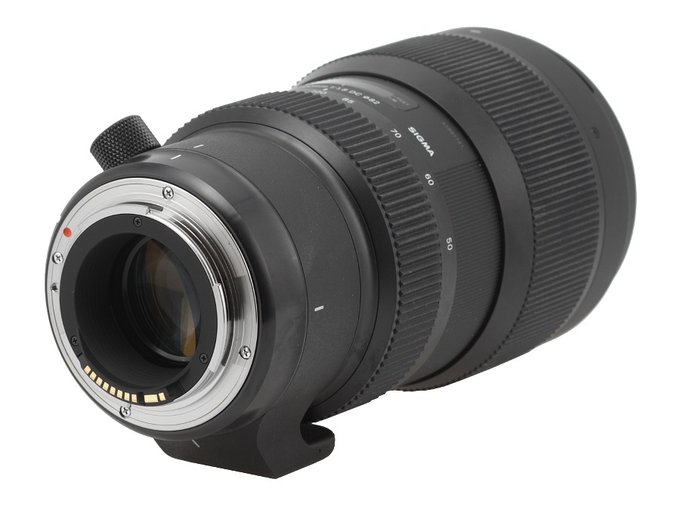 |
The proper tube of the lens is made of metal and it starts with a smooth ring which increases slightly its diameter; on that ring you see a white dot, making an alignment with a camera easier, an inscription “MADE IN JAPAN” and the 016 number, indicating the year of production.
A solid tripod adapter is next; it is situated very close to the lens’s body and allows you to rotate the whole instrument. Unfortunately you cannot detach it.
Then you see a zoom ring, 32 mm wide. Most of its surface is covered by a rubber armour, very pleasing to the touch, on which there are focal length marks at 50, 60, 70, 85 and 100 mm. The ring moves smoothly and is properly damped but it turns with pronounced resistance.
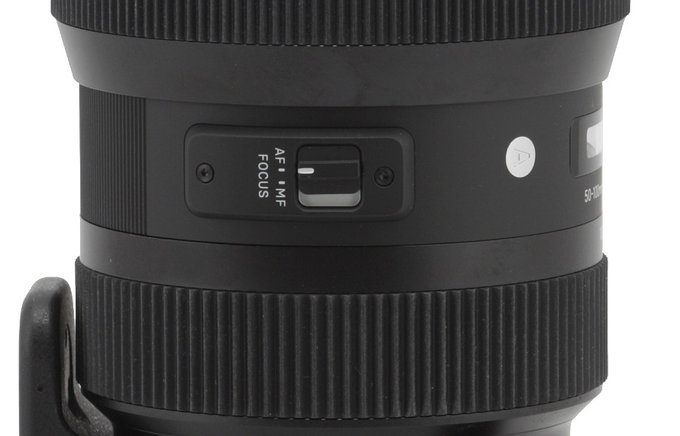 |
Moving further on along the tube of the lens you see an inscription with the name and parameters; over those there is a window with a distance scale expressed in feet and meters. On the left side of the scale you find a small “A” mark meaning the lens belongs to the Art line and the FOCUS AF/MF switch which allows you to choose the focusing mechanism working modes.
A manual focus ring, as wide as 43 mm, is the biggest part of the tested lens. It moves smoothly and is well-damped without any initial play. Running through the whole range needs a turn through an angle of about 150 degrees. It is a lot, taking into account the fact that you deal here with a lens equipped with autofocus; anyway very precise manual settings are completely possible.
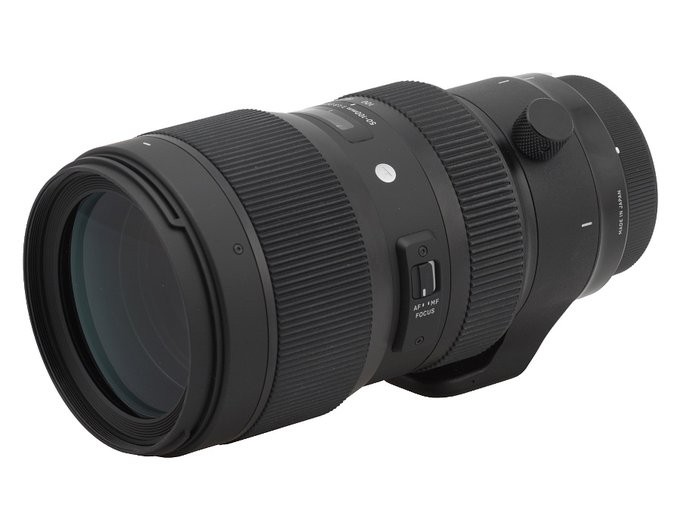 |
Further on you find an immobile part of the lens made of plastics which turns smoothly into a hood mount. The front element of the lens is 66 mm in diameter; it doesn’t move and is surrounded by a non-rotating filter thread, 82 mm in diameter.
The optical construction of the tested model consists of 21 elements positioned in 15 groups. As it’s become an habit of Sigma, there are a lot of special elements inside. You deal here with four low dispersion SLD glass elements and three FLD elements, made of glass which is claimed to have performance equal to that of fluorite. Additionally there is a round aperture with nine blades which can be closed down to f/16.
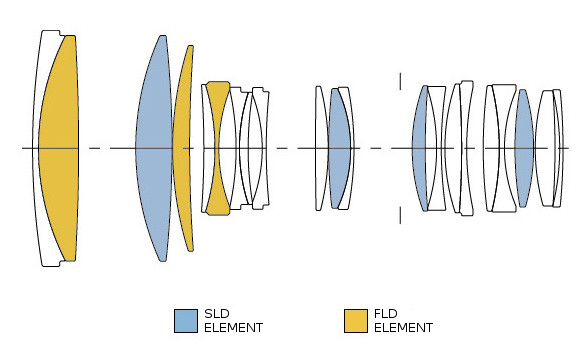
Traditionally A series lenses feature rich accessory kits and so the buyers of the tested Sigma can count on finding caps, a hood, a lens case and a tripod adapter, mentioned before, included in the box.
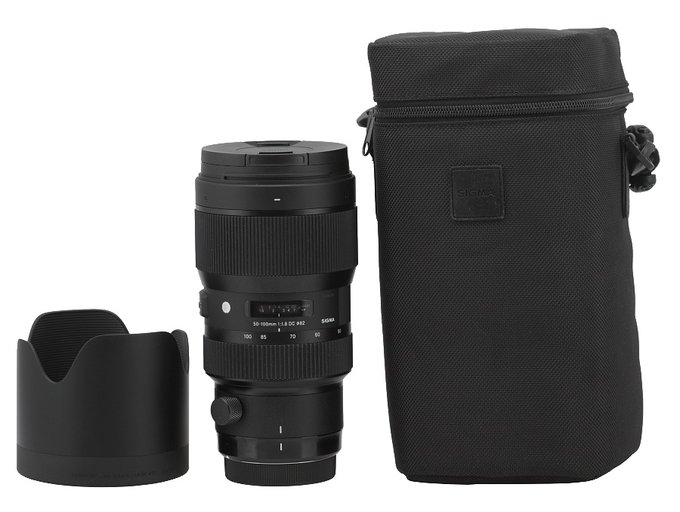 |






